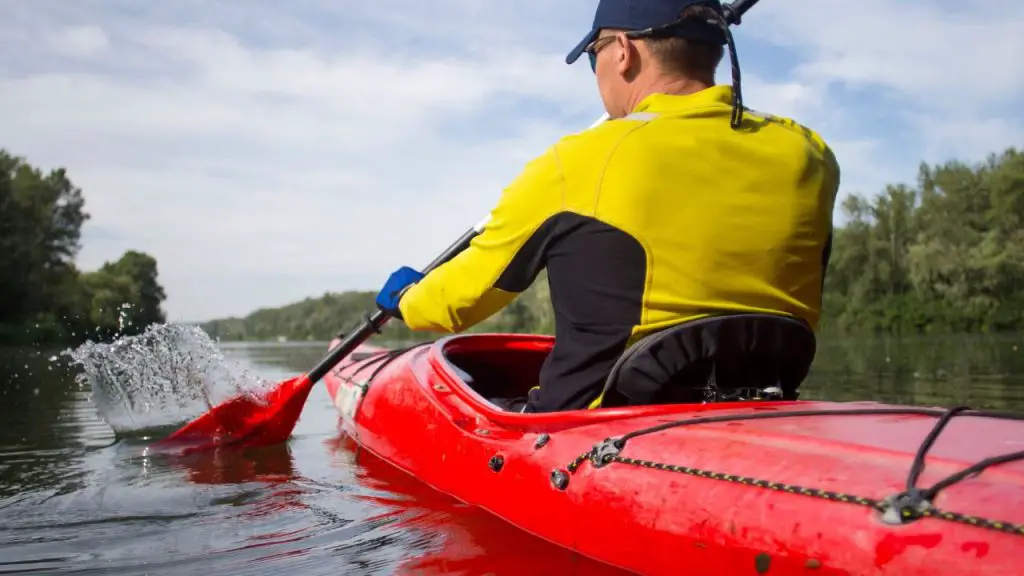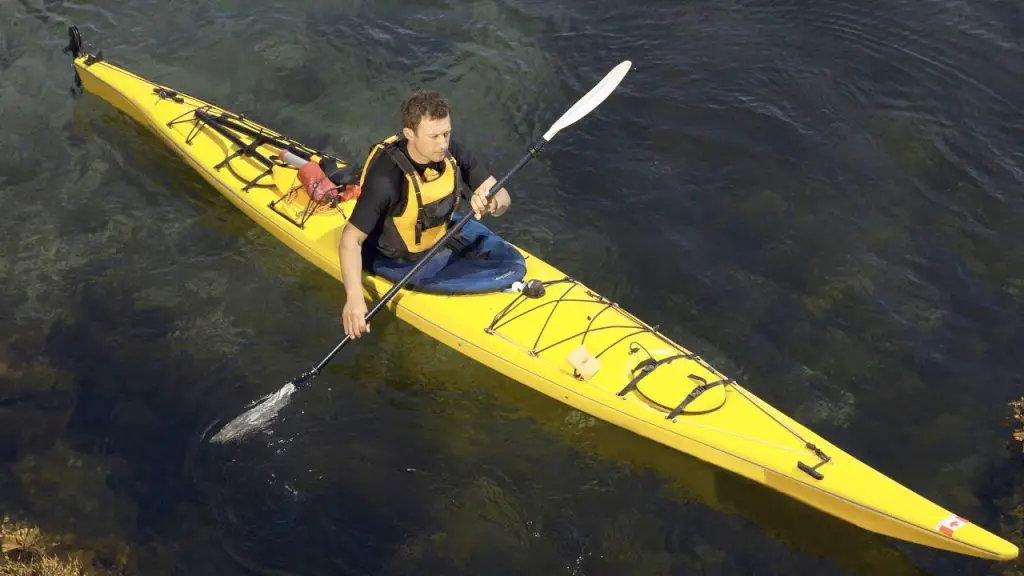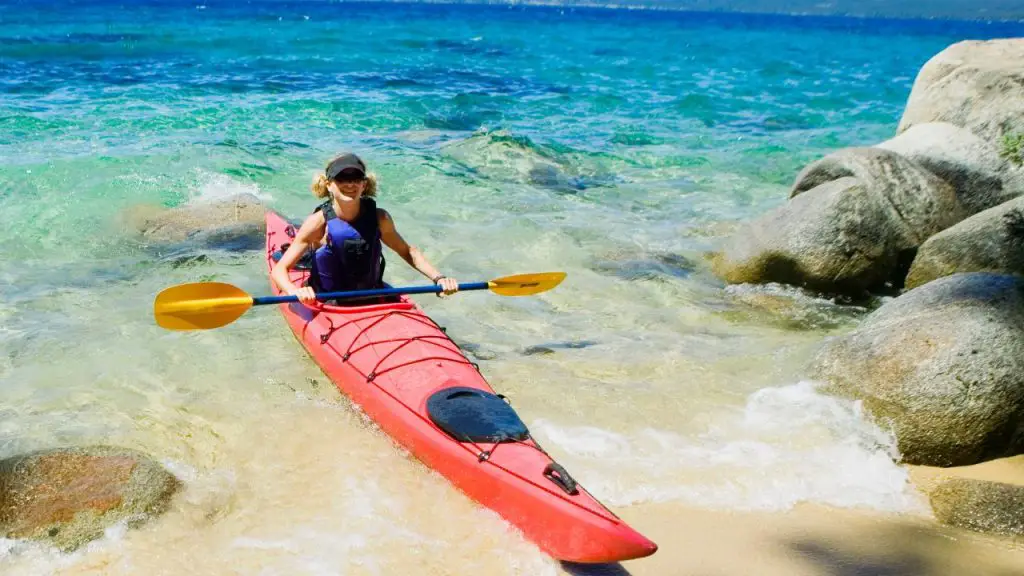Kayaking can be a fun and exhilarating experience, but it can also be dangerous if you don’t know what you’re doing.
For one thing, kayaks can get filled with water which can make it especially challenging for beginners to paddle. In this blog post, we will teach how to get water out of a sit-in kayak
Table of Contents
How to Get Water Out of a Sit-In Kayak

Kayaks can quickly fill up with water in multiple ways. You can take on water from external sources like waves or rain, or from internal sources like a leaky hatch.
No matter how your kayak became flooded, the key to getting the water out is to act quickly and efficiently.
The most important thing to remember is to not panic. If you start to feel panicked, it will only make the situation worse. Take a few deep breaths and focus on what you need to do.
Once you have calmed down, you can begin your assessment of the situation. You must take several things into account such as how much water you’ve taken in.
This information can give you an idea as to what method you’ll use to get the water out of your kayak such as tipping, using a hand-operated bilge pump, or by using a large sponge.

Tip the Sit-In Kayak
One of the most important things to learn in kayaking is how to tip the kayak. This does not only help you make quicker turns it’s also the most efficient way to get rid of water in your kayak if it suffers from significant flooding.
To tip the kayak, first, find the centerline of your kayak. The centerline is an imaginary line that runs from the nose to the tail of your kayak.
Once you have found this line, place both hands on each side of the kayak at the centerline and lift the kayak up out of the water.
Do a quick check to make sure that all your gear is secure and will not fall out when you tip the kayak over. Once you have done this, lean your body weight to one side of the kayak until it tips over.
The problem with this strategy is that it does not take all of the water out. Even a well executed kayak tip can leave some water in your kayak.
For certain situations, even just a little bit of leftover water can make it extremely difficult to maneuver your kayak.
Use a Lightweight Pump
You can use a lightweight hand pump to get rid of water that has accumulated in your kayak.
These pumps are specifically designed to get water out of small boats, not just kayaks. So, for a lot of boating enthusiasts, having a handheld bilge pump is a must.
To use the hand pump, first, find the center point of your kayak and place the pump on the floor next to it.
Then, place the end of the pump into the water and begin to pump. The water will get sucked out from inside the kayak and into the pump. It will then be expelled through an exit tube on the side of the pump.
Seattle Sports Paddler’s Bilge Hand Pump for Kayaks and Small Boats
Use a Sponge
A sponge is also a useful tool that can be used to get rid of water in your kayak. And it’s small and lightweight so most kayaks often have a sponge already pre-installed in them.
To use a sponge, find an area where you can comfortably reach the floor of your kayak. Once you have found a spot, place the sponge on the floor and begin to soak up the water.
Make sure to wring out the sponge regularly so that it can continue to absorb water.
Perception Kayak Sponge | Kayaking Water Absorbing Sponge
How to Paddle a Kayak Without Getting Wet?
While paddling is thought of as a great way to enjoy the water without going out for a swim, it’s unrealistic to expect that you’re not going to get wet when you’re kayaking.

The good news is that there are some things you can do to minimize the amount of water that gets inside your kayak and on you.
Wear the proper attire – This means clothing that is made from quick-drying materials such as nylon or polyester. It’s also a good idea to avoid cotton as it tends to hold onto water.
Use a spray skirt – A spray skirt is a piece of fabric that attaches to the rim of your kayak and provides a barrier between you and the water. This can be extremely helpful in keeping you dry, especially in rougher waters.
Dagger Outbound Spray Skirt | Touring Spray Skirt for Kayaks
Use the scupper holes on your kayak – Most kayaks have scupper holes which are designed to allow water to drain out of the kayak. By opening these holes, you can help reduce the amount of water that accumulates inside your kayak. However, this means you’re certainly going to get wet as these holes also let some water in.
Use the proper paddling strokes – There are certain strokes that are more effective than others when it comes to keeping water out of your kayak. The best strokes to use are the low brace and the high brace.
Use a flat paddle design – Your paddle design also dictates how much water you get splashed with in every stroke. Concave paddles are best for paddling fast, however, flat ones are best for leisurely paddling as it makes the least paddle splash preventing you from getting wet in the process.
SeaSense X-1 Kayak Paddle
Attach a paddle dip ring – Speaking of paddle splashes, using a paddle dip ring can also prevent you from getting wet while paddling. It should stop the water from dripping down the paddle and onto your hands and clothes.
By following these 5 simple tips, you can help ensure that you stay dry while paddling your kayak. And if you do happen to get wet, you now know how to get the water out of your kayak.
Seattle Sports Glow in The Dark Seawall Drip Rings for Kayak Paddles
FAQs
How do you dry out a kayak?
Simply leave your kayak out in the sun to dry for a few hours. If you don’t have time, you can also try wiping it down with dry towels.
How do you get out of a kayak in shallow water?
Getting out of a sit-on kayak is relatively easier than if you’re in a sit-in kayak. For a sit-on kayak, simply stand up and get out of the kayak while you’re using your hands to stabilize the kayak.
However, for a sit-in kayak, you’ll need to first exit the cockpit before getting out of the kayak.
How does water get in a sit-on kayak?
Sit-on kayaks generally take in water the same way as sit-in kayaks. So, it’s either by rains, paddle splashes, waves, rain, or leaky hatch.
Will a sit-on kayak sink?
While there are no unsinkable vessels, kayaks of any kind are extremely tough to sink.
They’re designed to withstand rough environments and can. So, as long as you take care of your kayak, you can rest assured that it won’t sink on your next trip.
Final Thoughts: How to Get Water Out of a Sit-in Kayak
Sit-in kayaks are incredibly tough vessels. They can take on a lot of water and still keep you afloat.
However, this doesn’t mean that you should allow your kayak to fill up with water. So, If your kayak does take on some water, follow the steps above to get rid of it such as tipping the kayak or by using a sponge or a bilge pump.
The most important reminder however, is to always be sure to properly care for your kayak so that it can last for many years to come.
So, what are you waiting for? Go out there and enjoy the great outdoors with your kayak!





